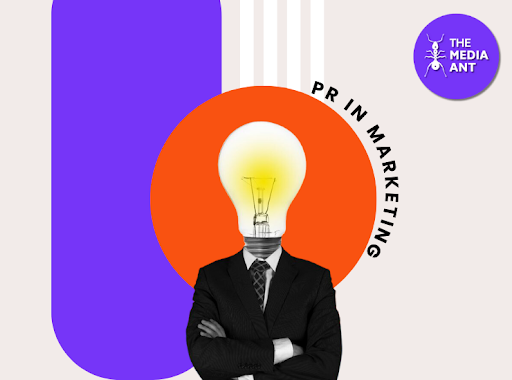Public Relations (PR) in marketing is often misunderstood, yet it’s a crucial element for building brand credibility and customer loyalty. In this article, we will dive deep into what PR means, how it integrates with marketing strategies, and why businesses need to invest in PR to thrive. As a leader in the digital marketing space for over 12 years, The Media Ant offers valuable insights into modern PR techniques.
Whether you are just getting started with PR or are looking to refine your marketing strategies, understanding the connection between PR and marketing is key to leveraging both for long-term success.
What is PR in Marketing?
Public Relations in marketing is the strategic communication process that aims to shape a brand’s image and foster a positive public perception through earned media, such as press coverage, blogs, and social media. Unlike paid advertising, PR focuses on creating organic brand awareness through authentic and credible sources.
PR involves a variety of activities such as crafting press releases, conducting media outreach, handling crisis communication, and forming partnerships with influencers. Its ultimate goal is to enhance a brand’s reputation and build strong relationships with its target audience.
For instance, Tesla’s PR strategy largely revolves around the founder Elon Musk’s public persona, media coverage, and social media buzz, helping the brand maintain a strong presence without traditional advertising.
PR tactics typically include:
- Media Relations: Working with journalists and publications to gain media coverage.
- Press Releases: Announcing new products, services, or company milestones.
- Influencer Partnerships: Leveraging influential figures to extend brand reach.
- Event Marketing: Hosting press conferences or product launch events.
- Crisis Management: Handling negative publicity or issues that could harm the brand’s image.
With the rise of digital PR, companies are now using social media platforms, blogs, and podcasts to build their public image, reaching audiences directly and personally.
What is Marketing and PR?
While both marketing and PR aim to drive business growth, they play distinct but complementary roles. Marketing is primarily focused on promoting products or services, acquiring new customers, and driving sales. In contrast, PR is concerned with shaping the public perception of a brand and nurturing long-term relationships with audiences.
In essence, marketing focuses on the “sell,” while PR focuses on building the trust and credibility necessary for successful sales. Together, they create a powerful synergy where marketing drives awareness, and PR helps establish the long-term credibility that supports sustainable growth.
For example, Apple uses marketing campaigns to promote new products like the iPhone, while simultaneously engaging in PR strategies by generating media buzz through product reviews and press events, ensuring the brand’s prestige and trustworthiness.
Benefits of PR in Marketing
Public Relations plays a crucial role in marketing, and businesses that invest in PR can enjoy significant benefits. These include:
- Increased Brand Credibility
PR works through earned media, meaning that your brand is often mentioned or recommended by independent third parties such as journalists, bloggers, or influencers. This helps establish trust with your audience.
- Improved Customer Trust
Brands that engage in transparent PR efforts—especially around product launches or crisis management—build deeper relationships with their customers. PR focuses on providing valuable, authentic content that resonates with audiences.
- Media Exposure
By developing strong media relationships, PR efforts often result in significant media coverage, extending brand visibility without relying on paid ads.
- Cost-Effective Marketing
Compared to paid advertising, PR often has a higher ROI since it leverages organic reach and credibility.
Best PR Strategies for Marketing in 2025
As we look toward 2025, the PR landscape continues to evolve. Businesses need to adopt new PR strategies to remain competitive and meet changing consumer expectations. Some of the most effective PR strategies include:
- Influencer Partnerships
Partnering with industry influencers can give your brand direct access to a highly engaged audience. It’s no longer just about traditional media; influencers have become powerful advocates for brands.
- Social Media Engagement
Brands need to engage directly with their audiences on platforms like Twitter, Instagram, and LinkedIn. Building authentic conversations allows brands to create stronger relationships and manage their reputation in real time.
- Data-Driven PR
Leveraging data analytics tools can help brands track the effectiveness of PR campaigns, measure sentiment, and make informed decisions about future strategies.
- Storytelling
Storytelling is becoming an essential PR tool. Brands that effectively communicate their values, history, and mission can create emotional connections with their audience.
For example, Nike’s use of powerful storytelling through the “Just Do It” campaign has established it as a leader in both marketing and PR, turning simple advertisements into emotionally compelling stories.
How to Integrate PR into Your Marketing Strategy?
To achieve maximum effectiveness, PR should be seamlessly integrated into your broader marketing strategy. Here’s a step-by-step guide to integrating PR into your marketing efforts:
- Align Your Goals
Both PR and marketing teams must align their goals to ensure consistent messaging. Set common objectives such as building brand awareness or improving customer loyalty.
- Define Your Key Messages
Whether it’s a product launch, a rebranding effort, or a crisis communication plan, it’s vital to define your key messages before any PR or marketing campaign.
- Collaborate with Influencers and Media
Create a strategy for collaborating with influencers, journalists, and other media outlets to ensure consistent coverage and support for your brand.
- Measure and Optimize
Track the results of your PR campaigns through media mentions, press coverage, and customer engagement. Use this data to optimize your efforts moving forward.
Conclusion
In conclusion, PR is an essential pillar of any successful marketing strategy. By focusing on building trust, improving brand image, and fostering positive media relationships, PR ensures that your marketing efforts reach the right audience in the most effective way possible. At The Media Ant, we’ve helped numerous businesses create successful marketing campaigns. Contact us today to learn how we can help you grow your brand.





